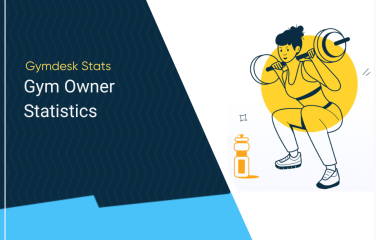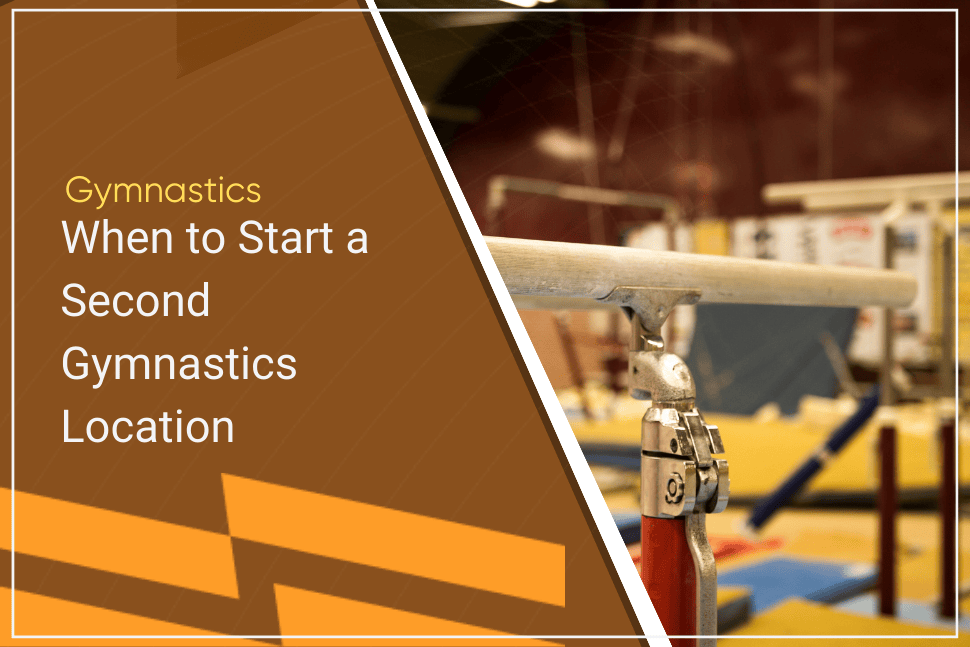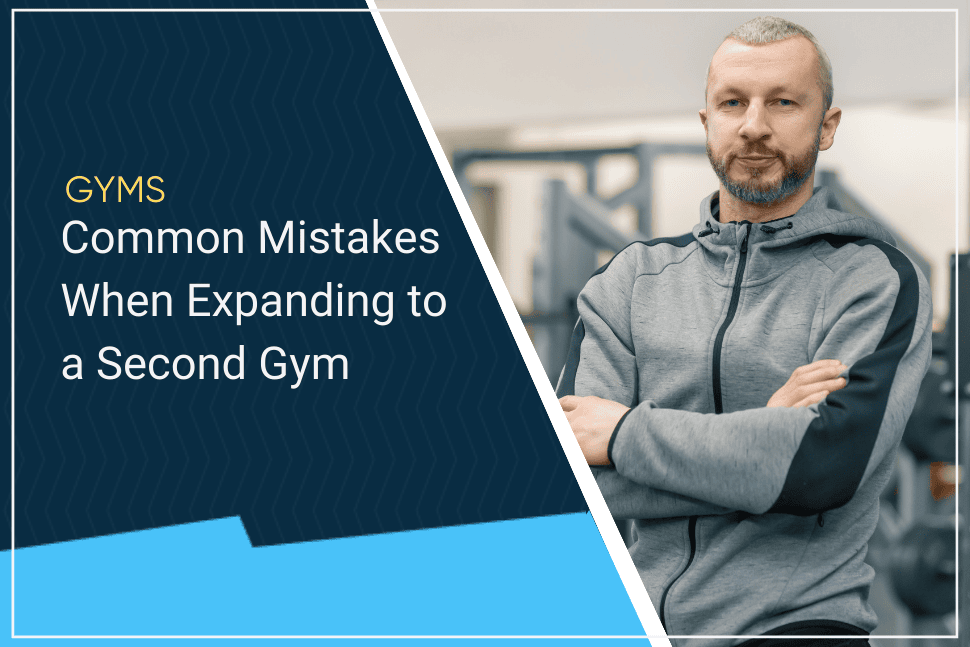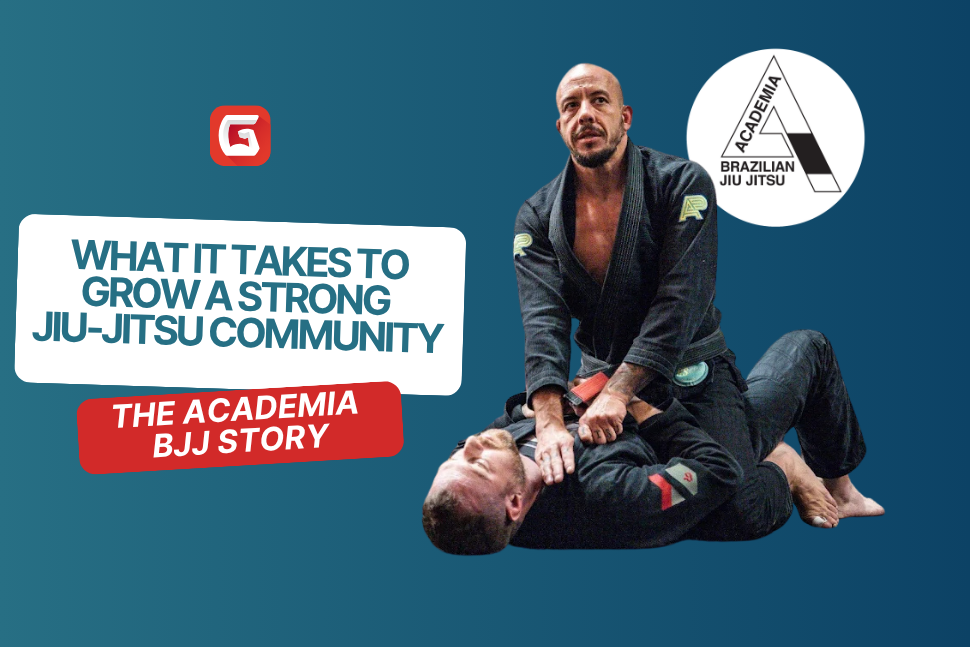It started with a chalk-covered floor and a handful of wide-eyed kids.
Coach Marissa didn’t have a grand business idea — just a passion for gymnastics and teaching the sport that created such significant change in her life. On the other side of town she leased a cheap warehouse, hung up some old parallel bars, spread out mats, and began. Word spread fast. In no time, that homely little gym was aflutter with cartwheels and somersaults, kip drills and the laughter of kids discovering what they could make their bodies do.
Three years later, there’s a waitlist. Parents want to know about birthday parties, toddler tumbling, and summer camps. Poor Marissa finds herself turning people away more and more; apologizing more than she’d prefer. Her coaches are working double classes, from preschool classes to beginner gymnastics class sessions for older children. And something she never thought about until it is right in front of her:
Is it time to open a second gymnastics location?
If you’re in a similar spot—balancing packed classes, passionate coaches, and a growing community—this guide will help you decide whether expanding your gymnastics business is the right next move, and exactly how to do it.
Expansion Considerations
Opening a second gymnastics location isn’t just about replicating what worked the first time—it’s about scaling your vision with strategy, stability, and a strong sense of readiness. Do your homework before you sign a lease or order that new set of balance beams, addressing the following key assessment areas.
1. Market Demand and Growth Potential
Above all other considerations, expansion should be demand-driven, not simply driven by ambition. Are your current classes full? Do you have a long waitlist? Are parents coming in from other towns or neighborhoods telling you that they want something closer? This is good news, indicating that the community wants what you offer.
However, demand at your current location doesn’t always mean demand elsewhere. Check the demographics and competition in the target location. Is the new neighborhood brimming with young families? Is there a school or community center nearby where you can offer after-school programming? Just as importantly—are there existing gymnastics centers in the area, and if so, are they operating at capacity or struggling to stay afloat?
Tools like surveys, focus groups, and partnerships with local schools can help you gather data and build confidence that your second location won’t just open—but thrive.
2. Operational Stability at Your First Location
Before stretching to a second facility, assess your first with a critical eye. Are you able to step away without having to work the party all night? Another location cuts your time, focus and dollars in half. If your current gym can’t run without you managing every scheduling change, parent concern, staff issue or hiccup, it might not be the right time to grow.
A good benchmark is whether your original location is:
- Financially profitable and consistent (with more than seasonal success)
- Operationally independent with systems, policies, and SOPs
- Staffed with strong leadership—a head coach or manager who can handle day-to-day responsibilities
- Staffed with enough experienced coaches to independently run each rec class, from basic skills to more advanced training
Have strong leadership in place: either a head coach/manager that can handle responsibilities on a day-to-day basis
3. Staffing and Coach Development
A gymnastics program cannot run without people. No matter how good your curriculum is, or how expensive your equipment and branding are, if you do not have the right coaches to carry out the vision AND motivate your gymnasts…
But how do you recruit, train and keep staff for a 2nd location? Consider:
- Who in your corner is ready for a promotion to head coach
- Is it possible to replicate this coaching philosophy in safety standards with new recruits?
- Can you be involved enough to give the new team a personal touch, or do you have someone from your first gym that you trust to help launch the second and assign them in charge of doing so.
Growing too fast without enough qualified coaches is a common mistake. By hiring too quickly, you may negatively impact your gym’s reputation and culture. Make sure your team can support every type of class, from trial classes to competitive gymnastics.
Evaluate Current Programs
Before opening a second gymnastics location, it’s critical to take stock of your current offerings and financial readiness. Begin by asking what sets your existing gym apart.
Then think about what you might be able to replicate at the new site from your top programs. Don’t launch all of your classes immediately; start with only your highest-capacity and most scalable programs and respond to local demand as you expand.
Your success cannot be dependent on employee personality or seat-of-the-pants ways of teaching. Rather, you will need to systematize and document every step of the way. It is also essential to maintain consistent branding and deliver the same value across both venues. Providing a place for children to be able to follow a competitive standard program will appeal more to those parents looking at long term pathways for their child.
Conducting a Financial Analysis
After you have mapped out which programs you can offer, it is time to see whether or not the numbers will line up for expansion. A second gymnastics facility comes with a range of startup costs, including:
- Lease or property purchase
- Renovations or equipment installation
- Gymnastics apparatus and safety mats
- Branding and signage
- Marketing and grand opening events
- Staff hiring, onboarding, and training
In addition to launch costs, there are also operational costs that include:
- Monthly rent or mortgage
- Utilities and maintenance
- Payroll and taxes
- Insurance and liability coverage
- Technology and administrative costs
Develop your complete set of financial projections including the startup budget as well as all revenue projections for the first 12–24 months. This will also come in handy if you are still negotiating with banks or investors for extra cash. Include projections for class, camp, retail and fun experiences to be delivered such as birthday parties or rec class showcases.
Funding Opportunities
You might not have to reach into your own wallet to fuel growth. Explore other funding sources such as:
- Small business loans: Offers a lump sum of capital to be put towards equipment, renovations, or marketing and typically come with flexible repayment terms and competitive interest rates.
- Local grants (e.g. youth programming or wellness): Often, government agencies and non-profit organizations provide grants as long as they fund certain initiatives related to health, education, or community engagement.
- Local Business sponsorships: Another way to get local businesses into the action is teaming up with companies that could help streamline the financial support (in return for a little brand visibility, cross-promotion and good community vibes).
- Community crowdfunding efforts: Use platforms such as GoFundMe or Kickstarter to rally a community behind a common goal while you raise some initial capital.
Assessing Revenue Potential
Enrollments will depend on a wide range of factors such as market research which lead to an estimated number. Capture data from your existing gym to devise accurate projections for tuition income, merchandise sales, special events, camps and private lessons.
Ask yourself:
- How long will it take to break even?
- What’s the minimum enrollment needed to cover fixed costs?
- What’s the best-case scenario—and the worst?
Be sure to account for income from preschool classes, competitive gymnastics, rec class programs, and workshops that build basic skills or introduce a new skill. Offering the right mix of fun, variety, and progression ensures that most children stay engaged and continue to enroll session after session.
Location and Facilities
Choosing the right location is one of the most important decisions you’ll make when opening a second gymnastics facility. When it comes to the ideal site, It is not all about square footage — it about visibility, accessibility, security and future-proofing. A good location can help your reputation and attract new parent segments, while a bad one may restrict your expansion and ruin your brand.
Accessibility and Visibility
Begin with the basics of location: can people locate your new gym?
Parents are more likely to enroll their children in gymnastics classes or go looking for them when they are convenient. Your second location should ideally be close to:
- Family-dense residential neighborhoods
- Schools and daycare centers
- Main streets or busy Highways
- Lots of safe, convenient parking (especially important for parents with infants and younger kids)
A gymnastics school with visibility and traffic, along with good signage will get new students. Yet, you can have the best gymnastic class programming in the world, but it means nothing if people can’t find your gym.
Safety and Facility Standards
Once they’re inside, families should immediately sense that the space is professional, safe, and purpose-built for gymnastics. Your facility should meet or exceed all safety standards for gymnastics instruction, including:
- Type of flooring (spring floors, padding to absorb shock from tumbling)
- Clean equipment: balance beams, bars, vaults, foam pits
- Clean, well-lit, and ventilated environments
- Welcoming and clean restrooms, locker rooms, and waiting areas
Ensure Your Layout Works for Both User and Flow
Are there sections that cater to appropriate ages or levels? Space for warmups, conditioning and parental viewing? A tight or cluttered site immediately takes away from the professional aesthetic of your gymnastics program.
Look five years down the road, not just what’s immediate. The most successful second gymnastics locations are those selected to support future expansion. Ask:
- Is there space next door or close by that might be available in the future?
- Is there more programming your gym could provide like ninja training, cheer or preschool classes?
- Can you accommodate running events, birthdays or contests?
Even if you start small, having options to scale your program or facility layout later will save you the hassle and expense of relocating once you’ve built momentum.
Zoning and Legal Compliance
Ensure you know exactly what you are getting into by verifying local zoning and land-use regulations before purchasing a site. There might be regulations on maximal noise levels in a space, or where signs can be placed, or what sort of business use is allowable. You’ll want to confirm:
- Structure Zoned Recreation/ Instruction
- Unlimited hours of use
- Your plans for any renovations or build-outs must satisfy local code
Staffing and Training
At the core of every successful gymnastics facility is a highly skilled, dedicated coaching staff. People are the heart of the company, and their resilience, readiness and focus will determine whether you can deliver a high level of consistent quality. For success with a second gym location, you need to replicate your culture, coaching and presentation standards. That starts with hiring and training the right team.
Hiring Qualified and Experienced Coaches
Hire highly credentialled coaches, including at an elite level competitive background —national champion, collegiate coach, child development and early childhood education. Look for team members who:
- Are aligned with you regarding safety, progressions, and positive coaching
- Have a genuine enjoyment for working with children ages three years to 8th grade
- Understand how to foster both skill development and personal growth
- Are able to run classes independently
- Can communicate confidently and professionally with parents & mentor junior staff
You need more than just top-notch coaches; you also need a well-rounded front desk staff person, general manager or operations manager as well as charismatic customer service reps. These are the folks who establish many of the first impressions at your gym and therefore can make — or break — the member experience.
Creating a Robust Training and Development Package
Employing the right people is merely the first stage to succeed. To ensure consistency across both locations, you need a strong. consistent training program. This includes:
- In-depth training including outlines for classes, safety protocols, brand core values and communication standards
- Ability to attend continuing education and certification workshops
- Team meetings, performance reviews, and feedback loops
- Pathways for Leadership and Internal Promotion
Training manuals, video tutorials and coaching playbooks allow you to create a common framework for your systems while minimising reliance on one individual. Ensure your new coaches are trained to recognize a child’s interest, nurture it into skills, and celebrate progress with recognition like a great floor routine or new mobility score
Addressing Staffing Shortages and Recruitment
Professional qualified gymnastics coaches are a dying breed in the sport of gymnastics. Analyse the local talent pool before leapfrogging to your second location Do you have enough qualified coaches in your region to fulfil your demand? If not, you may need to account for this by planning the growth of one or more members of your existing team into a new role at the second gymnastics location.
You don’t want to over-burden your current staff to handle operations in both locations. If demand means you are stretching your team too thin, they will be either burnt out or leaving regularly, leading to rates of inconsistency. In order to instil long-lasting talent retention and team loyalty:
- Monitor workloads and schedules carefully
- Ensure all staff take frequent breaks and time-off.
- Provide benefits whenever applicable (i.e. health perks, bonuses, training stipends)
- Instil practices of gratefulness and acknowledgment
- Keep lines of communication and help open
Marketing and Promotion
Successfully opening a second gymnastics location involves more than simply flipping on the open sign in the front window—people have to know, trust and be excited about what lies beyond those doors. Your marketing plan should be as strategic and thoughtful as your content calendar — from building buzz prelaunch to keeping the party going 365 days a year.
Build Hype Before You Open
You should start advertising your second location 2–3 months out from opening day. This should involve a multichannel approach; you need to get the word out on your website, email list, and social media:
- Launch a “coming soon” marketing campaign showing videos of someone getting the space ready, like construction and staff training videos
- Offer a pre-registration discount or give away founding member perks.
- Conduct different types of Gymnastics open houses or trial classes to meet local families face-to-face with your gymnastics programs.
- If you are going into a new market, leverage paid advertising to reach parents of girls, children and older kids to showcase that your programs enable all kids.
Leverage Community Partnerships
If new to an area, building local relationships is one of the most powerful tools for earning trust and visibility. Partner with:
- Schools & pre-schools through flyers, newsletters, and P.E. class demonstrations
- Paediatric clinics, family therapists and kid-centrist businesses
- Events within the community, farmers markets to set up a booth, giveaways or fun skills challenges
You are always going to have more sway when one parent introduces another versus a cold ad. Referrals gets you positioned as a community-based organization where the connection to the coach matters.
Keep Branding Consistent Across Locations
Your second location should be just as professional and carry the same atmosphere as your first gym. That means consistent use of:
- Logo, colors, and voice
- Courses, competitive programs, and descriptions
- Core values and customer experience
Both facilities should present a consistent brand experience as families visit from one to the other. The more cohesive your presence is, the more trust you will naturally build.
Provide Incentives for Referrals and Encourage Word of Mouth
Your existing members are your biggest cheerleaders. Set up a referral program for families to profit from your expansion — free classes, 50% off with the branded swag or anything that works. Additionally, user-generated content — when parents submit pictures, reviews, or stories about how well their child is doing, learning new skills or landing a strong floor routine — helps to organically build social proof and credibility.
Maintain Ongoing Visibility
Marketing starts from before the doors open and never stops. Maintain the momentum by:
- Sending regular email newsletters
- Sharing posts on social media, featuring coaches, student successes and community events.
- Holiday Camps, Tryouts, Rec Classes & Preschool
- Testimonials from the majority of children who have mastered a new skill or improved their mobility score
Risk Management
Gymnastics is a very challenging activity that presents unique risks: financial, physical and operational. That’s why robust and proactive risk management planning is vital.
Safety Protocols and Emergency Preparedness
Gymnastics is a physically demanding, high-impact sport and even with the best coaches and spotters unexpected things will happen. As a result, you must have clear, consistent safety protocols around both equipment and other safeguards at both sites. Classes of any kind should follow a structured progression based on the age and skill level of your students. Train coaches to detect students in jeopardy, instruct them on setting boundaries around the equipment and provide guidelines for when a student is not ready for a new skill.
Emergency Protocols should be uniform. Everyone needs to be informed about:
- Basic first aid Points to be covered
- Calling 911 and Alerting Parents
- Incident reports/safety documentation: how and where to find them
Staff have to be drilled and retrained on a regular basis to maintain promptness as well as confidence in their response.
Liability, Insurance and Legal Protections
Physical activities bring the threat of potential liability with it. Be sure to have the following aspects of your business covered by insurance before you head into launching your second location:
- General liability
- Property damage
- Professional liability (errors and omissions)
- Workers’ compensation
- Participant accident insurance
You should also carefully check your waivers and limited liability documents: these should clearly spell out the risks of participation and have to be signed by parents or guardians. Always seek professional legal help to make certain your documents comply with any national laws that may affect your gymnastics program.
Equipment Maintenance and Facility Safety
Poorly maintained or outdated equipment is one of the leading preventable causes of injury. Create a timetable for equipment maintenance as you grow including:
- Checking balance beams, bars, and mats daily for signs of wear or rips
- Routine check of all equipment on a weekly basis to ensure everything works as intended
- Building-wide, monthly thorough cleaning and safety inspection
- Invest in good quality mats, beams, bars and other equipment
- Make sure you address problems and get them taken care of: stock spare parts (even if it’s just software back-ups) and work closely with your equipment suppliers.
Safety is even more important when introducing new skills in a competitive gymnastics environment. Set up safe floor routine zones with plenty of space and plushy landings. In addition, make sure the layout of your facility is safety-friendly with adequate space between objects, ample padding around anything that could cause injury and designated storage areas for unused equipment.
Expansion Timeline
Having a well-planned progression timeline is beneficial, enabling you to manage the many moving pieces of your project and manage anxiety-induced procrastination. Your timeline takes you all the way from early planning through post-launch evaluation, pushing decisions in one direction or another and keeping the team aligned — redrawing that schedule continuously to allow for progress while holding onto flexibility.
Set Milestones and Deadlines
First, plot out the big stages of your growth and give each one a feasible milestone. A timeline in detail makes tracking progress easier, assigns duties and allows systematically identifying bottlenecks beforehand.
Key milestones may include:
- Market research and validation (trial classes, pop-ups, or seasonal programs)
- Site selection and lease negotiations
- Facility renovations or build-out
- Equipment procurement and setup
- Staff recruitment and training
- Marketing and pre-enrollment campaigns
- Soft launch or trial classes
- Official opening day
- First 90-day review and adjustments
Target dates should be provided for each stage and buffer time scheduled into your plan to account for delays, particularly in relation to permits, construction or delivery of equipment.
Consider Phased Expansion
Rather than launching everything at once, begin with a few core classes—such as basic skills, tumbling, or trial classes—then expand into competitive gymnastics, college gymnastics, or more advanced training options. That way you can test out what works, tweak and adjust.
For example, you might:
- Open with pre-school and beginner gymnastics classes only
- Launch competitive team programs in quarter two
- Start with weekday programming, adding weekends later
- Test a pilot program (e.g., parent-and-tot classes or tumbling-only courses) before scaling
This approach allows you to feedback and refine your operations, and assess the community response before going all-in.
Build in Flexibility
There are always going to be obstacles in the way the best-laid plans. Building site delays, uninsured construction issues, and unanticipated expenses all come with the territory. This is why your timeline should be flexible, not firm. Meeting with contractors, staff leads, and marketing partners every week is the best way to ensure your progress on each project stays on task and problems do not snowball. When a deadline slips, be prepared to make changes without destroying the whole project. You should also be able to pivot quickly if early signs say that something is not working, be it a class offering, pricing model or scheduling decision.
Prioritize Ongoing Evaluation
Following your grand opening, schedule regular evaluation checkpoints to figure out how things are faring. Look at:
- Enrollment numbers
- Staff performance and morale
- Parent and student feedback
- Facility usage and maintenance
- Budget performance vs. projections
Apply this feedback to program changes, capital investments and goal setting.
7 Signs You Are Ready to Open a Second Gymnastics Location
1. Strong Business Performance at Your First Location
You’re always in the black at your current venue. Your enrolment base is healthy and on the rise Your classes are full most of the time. You are able to attract more potential students, but there is a waitlist for your courses.
2. Operational Systems Are in Place
You have written policies, processes, and course outlines. Your billing, & communication with customers are streamlined. Your programming and curriculum are super easy to replicate.
3. Leadership and Staff Readiness
You have great coaching leadership at your present location. You have a systemized recruitment plan in place. You have structures in place to ensure your workers do not burn out.
4. Market Demand and Location Insights
You have identified a second, high-volume local location. You have done research on the demographics, competition, and growth potential of the area. The location is accessible, it has good visibility, and it’s a great setup for a gymnastics-based facility.
5. Financial Readiness
You have a realistic build-out and launch budget. You have estimated go-forward costs and when you will break even. You can fund the project either from savings, loans, grants, or investors. Your business plan includes revenue projections and fallback options.
6. Proof of Concept
You have successfully tried new classes or improved programs via pop-up classes in the new area, etc. You have received favorable feedback from prospective customers in the region.
7. Flexibility and Scalability
If new problems come up, you will be able to alter your plans post-opening. You can scale across multiple locations — your brand presence is strong.
Final Gut Check
The thought of growing doesn’t make you anxious; it makes you excited. You’ve talked to mentors, advisors or other business owners. You can see where you want your business to be in 5–10 years.
Conclusion
A second gymnastics site should never be a quick decision. It isn’t simply about more space and more kids. It’s about leadership, systems, discipline, and sustainability. If your gym is already doing well, you have a great team in place and a few repeatable programs that are relatively easy to reproduce at scale and if your financials are sorted out, chances are expansion of some kind is probably your next best move!
Take your time. Build it right. And when you do open those doors, make sure they lead to somewhere just as magical as where it all started.
 Gym Owner Statistics: The State of Gyms, Member Trends, and Usage Data
Gym Owner Statistics: The State of Gyms, Member Trends, and Usage Data




 EN (English)
EN (English)
 JA (日本語)
JA (日本語)